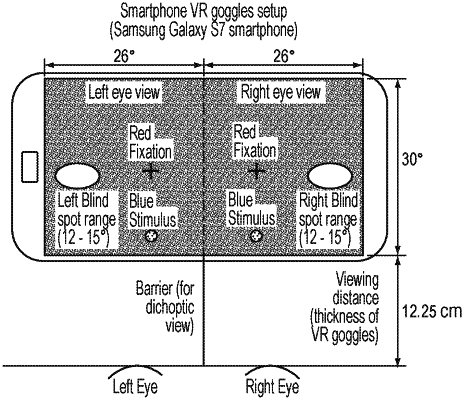| CPC A61B 3/063 (2013.01) [A61B 3/005 (2013.01); A61B 3/0058 (2013.01); G02B 27/017 (2013.01); G06F 3/013 (2013.01)] | 18 Claims |

|
1. A method for measuring dark adaptation characteristics comprising:
exposing at least one eye of a patient to a light source to bleach a retinal location of the at least one eye;
placing a mobile device in a mobile device viewer and placing the mobile device viewer over first and second eyes of the patient, wherein the mobile device view has only one lens over the first eye of the patient and an open space over the second eye of the patient;
displaying to the at least one eye on the mobile device a figure with a luminance and waiting until the patient communicates with the mobile device to acknowledge that the patient can see the figure;
measuring and recording a level of the luminance and a time period between first displaying the figure and the patient communicating with the mobile device;
continuing to display additional figures with decreasing luminance one at a time until the patient communicates with the mobile device to acknowledge that the patient can see each additional figure and to measure and record each decreasing luminance and each time period between first displaying each additional figure and the patient communicating with the mobile device until either a maximum allowable time period has expired or an additional figure with a lowest possible luminance has been displayed by the mobile device and acknowledged by the patient; and
determining, by a processor, dark adaptation measurements of the at least one eye based on the measured and recorded luminance and time periods.
|